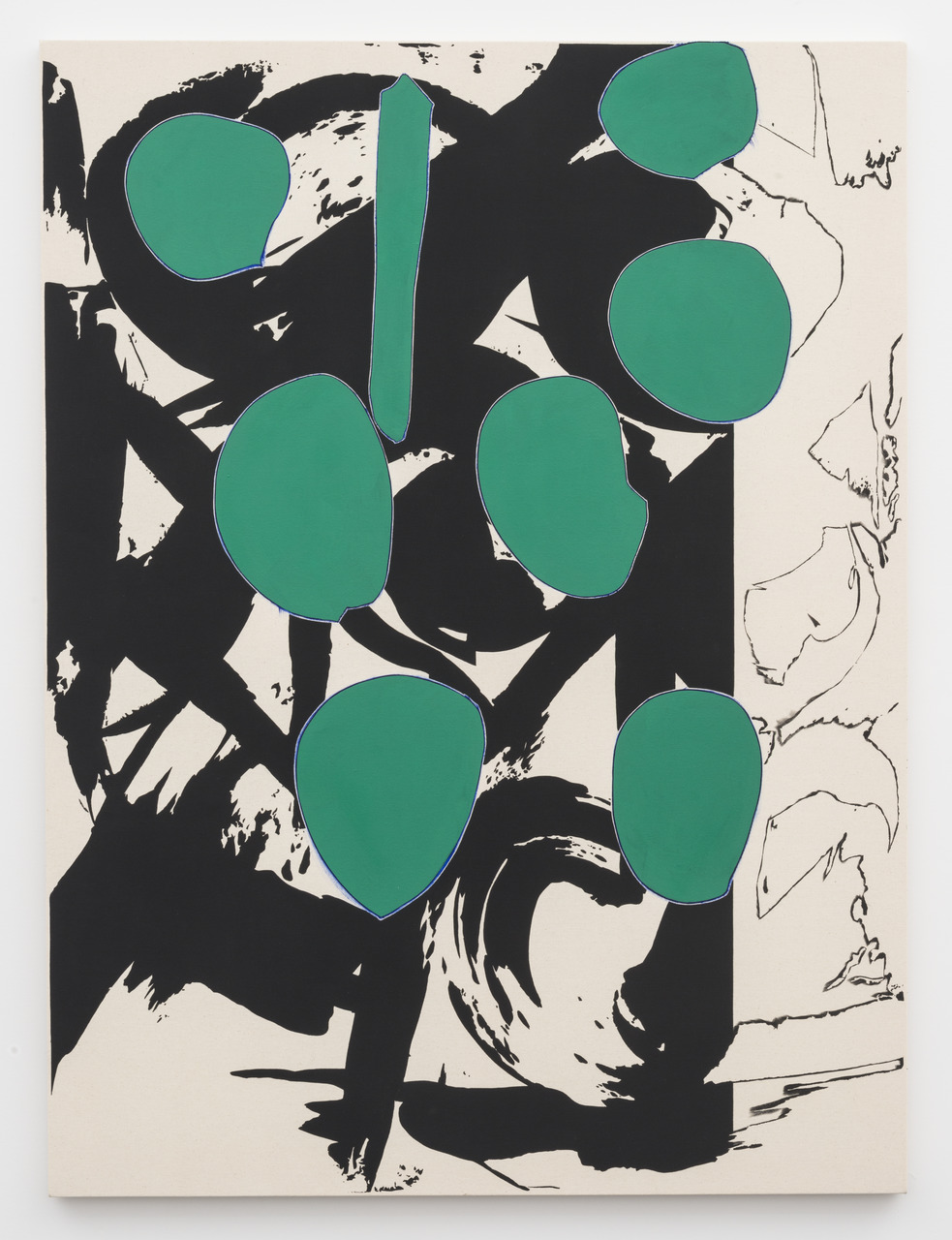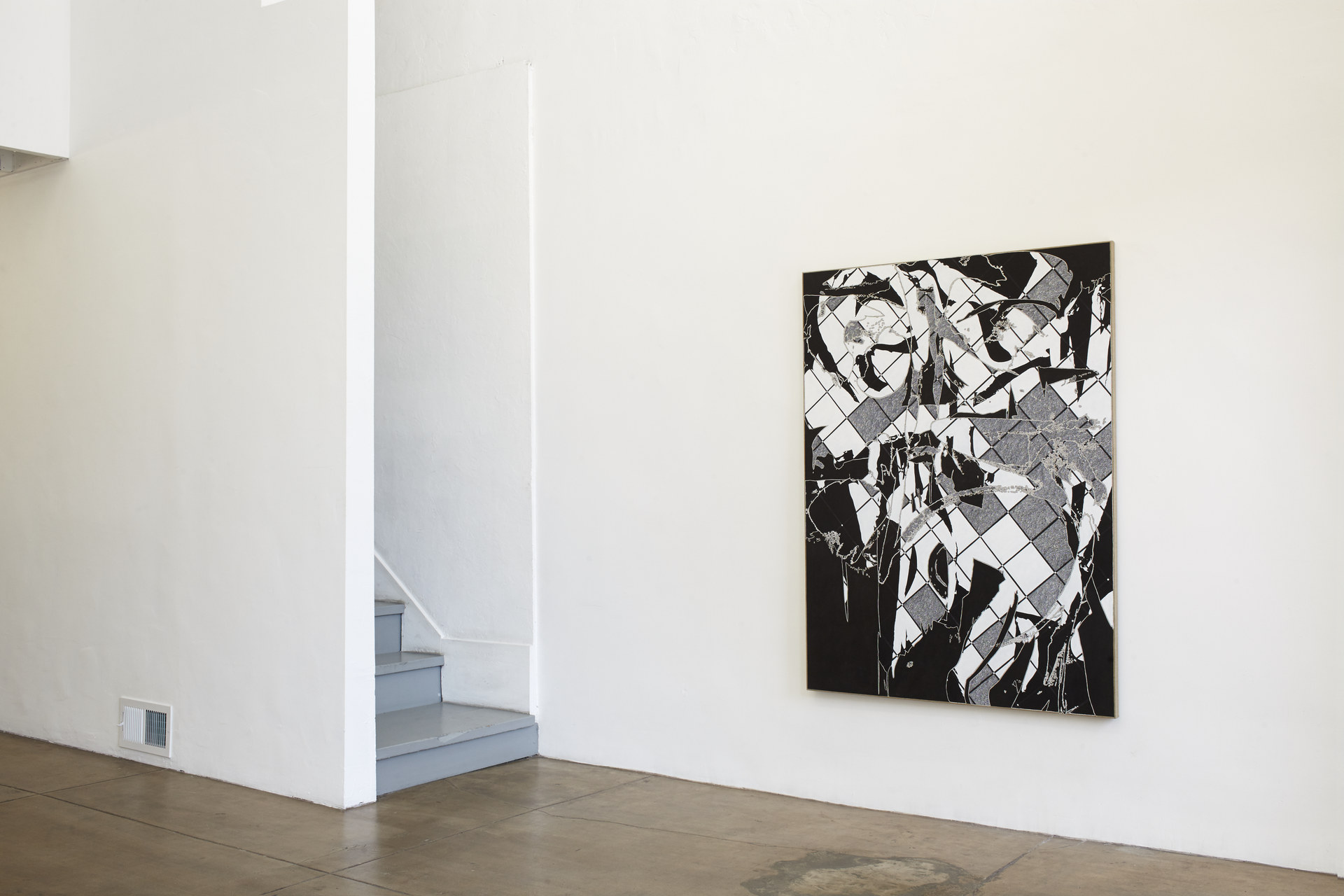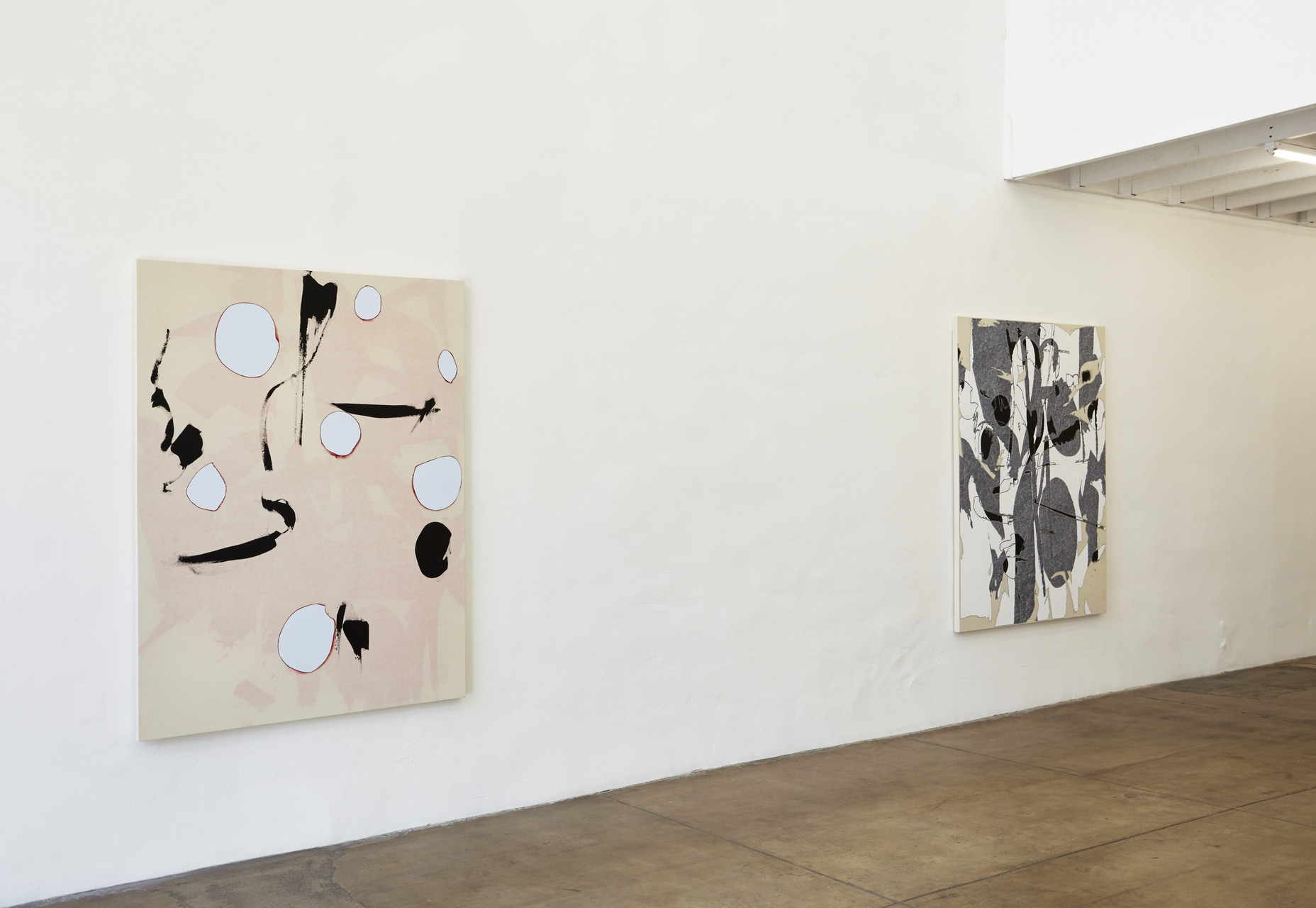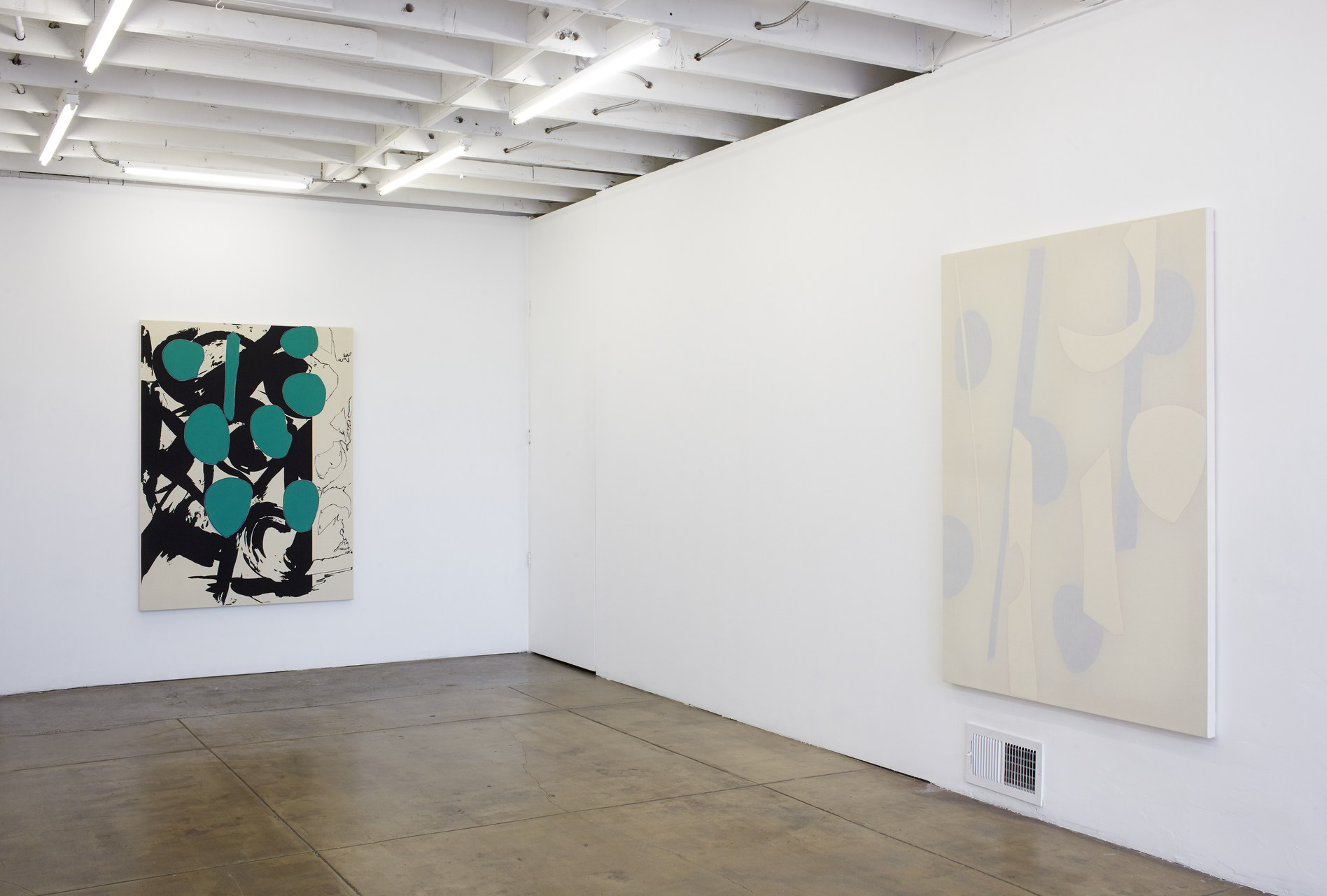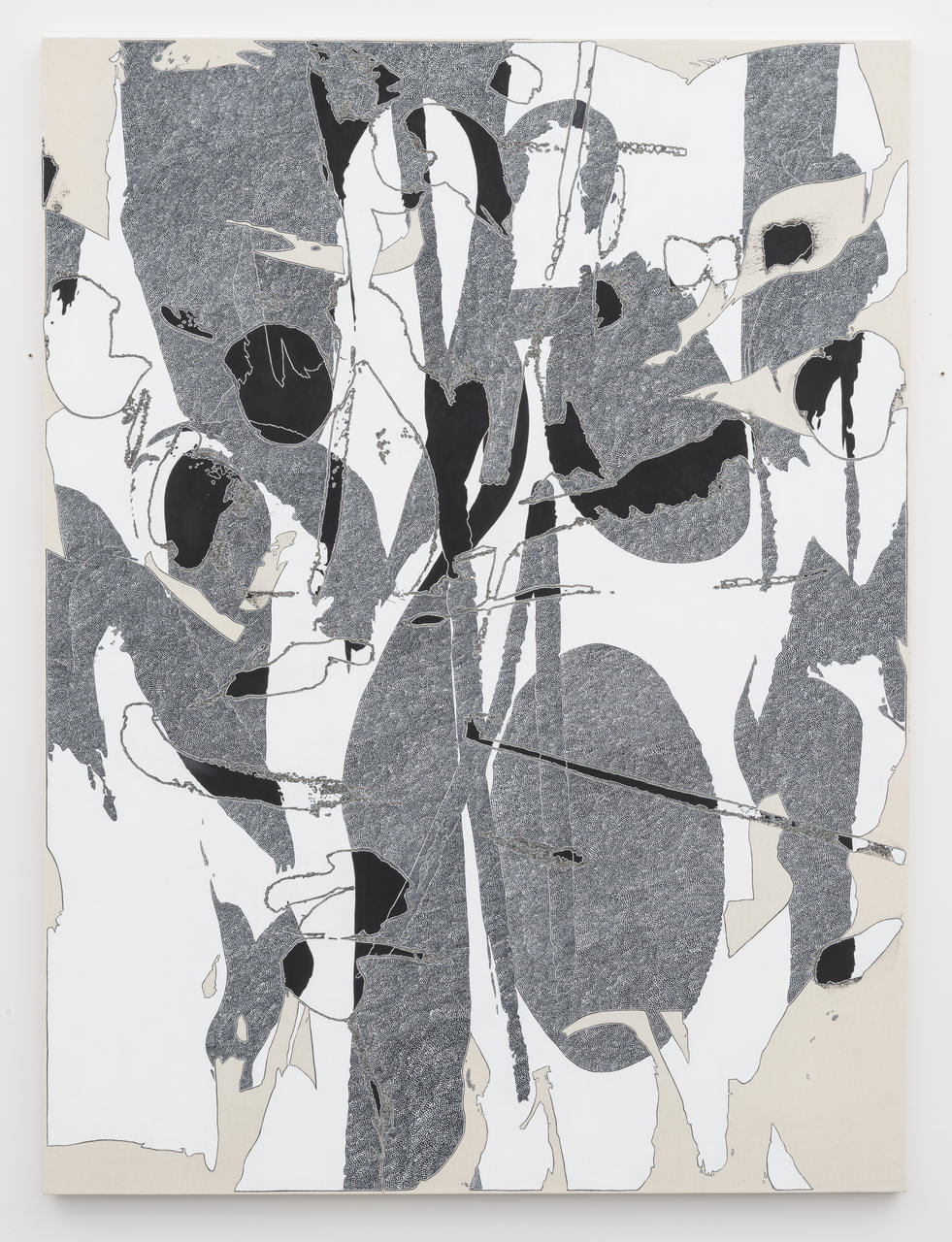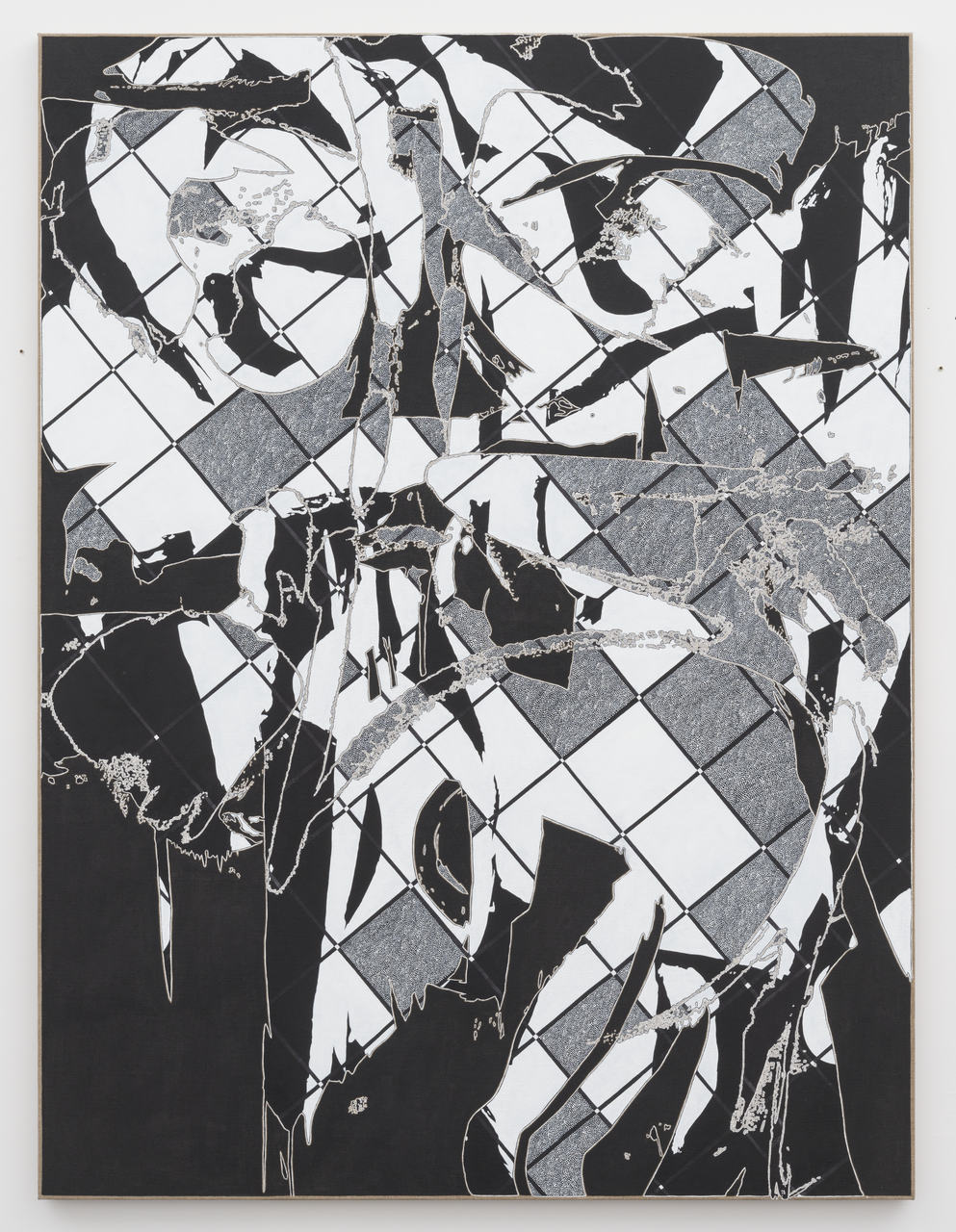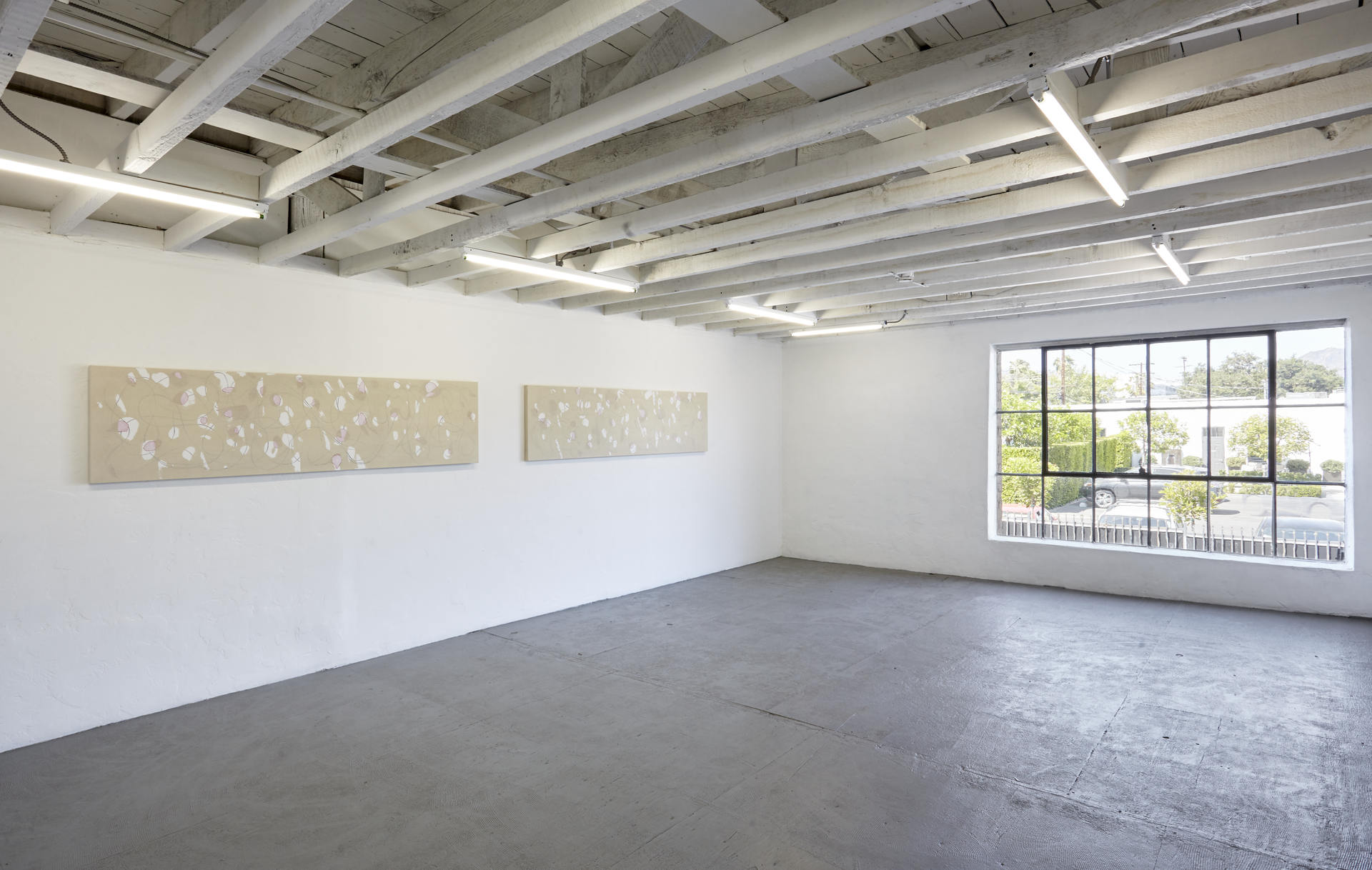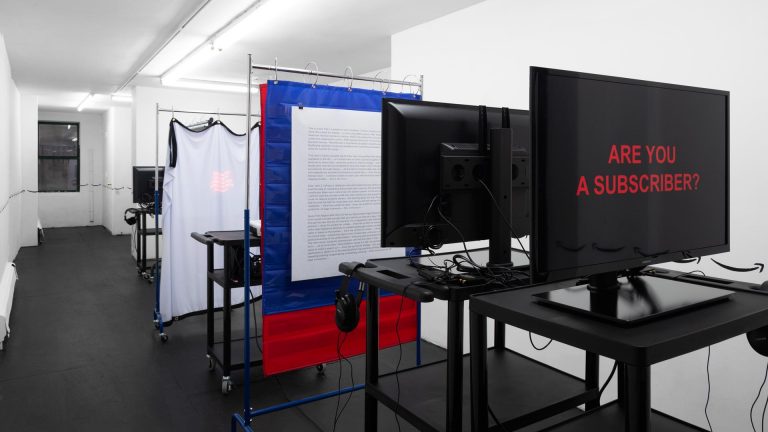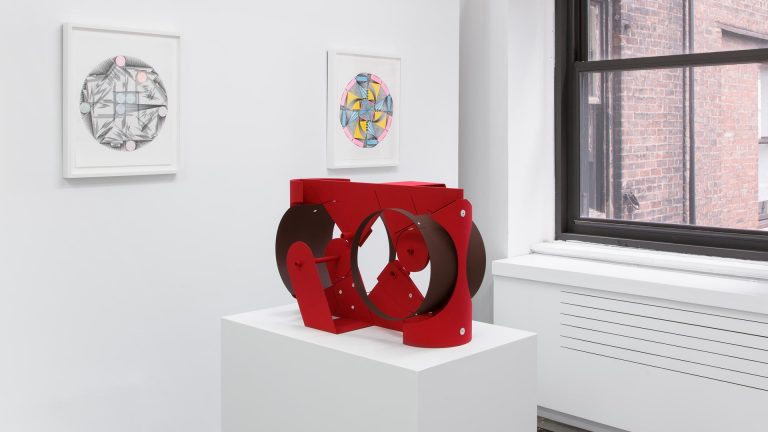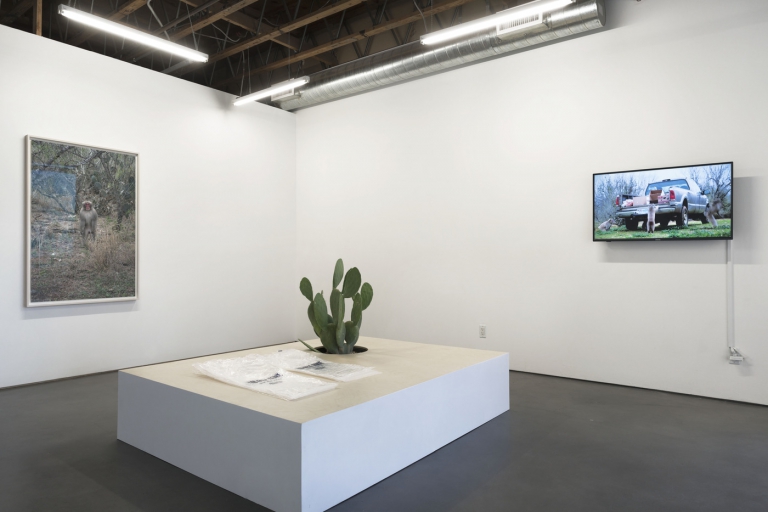Artist: Zak Prekop
Venue: Thomas Duncan Gallery, Los Angeles, US
Date: March 27 – May 25, 2015
Photography: Images courtesy of the artist and Thomas Duncan Gallery, Los Angeles
Composition with Ending Field – The field in this painting is the background, which was made by painting on glassine, cutting that image out, and painting through it as a stencil onto the canvas, around the green and blue composition that was painted first. The edges of the stencil were plotted out, but the image was only completely painted in up to a column on the right that was left unfinished. That’s the ending.
Composition with Illusion – The blue marks were made with a palette knife. The black marks were painted through a stencil leaving measured, narrow gaps that create vertical bars. Where the two sets of marks appear to overlap an illusion of transparency is created by leaving areas blue where the black marks would have continued. The rest of the blue marks were painted white.
Transparency with Blue Light – All of the elements of this painting are meant to move back and forth from one face of the canvas to the other. The red paint on the back can be seen through the muslin on the front. The blue circles emit light and the black marks remove it – into and away from the surface. The blue circles are separated from their surroundings by dark red outlines, pushing them into indeterminate space.
Transparency with Drawing 1 and Transparency with Drawing 2 – These paintings could continue to the left or right. The two are similar and so begin that potential expansion. A painted, moving line and patches of red are visible through the canvas and as rendered within patches of white paint on the surface. These marks hold pictures of what is behind them. These are works in disappearance. They appear to have had much of their paint removed and the format evokes a narrow view from behind a short wall and a low ceiling.
Transparency with Four Colors – Paper shapes were collaged to the back of this canvas and then painted red, but the paint extends just beyond the paper edges to form a fine red outline visible on the other side. The paper shapes are joined by painted blue shapes. All of this is visible through the muslin, which has nothing applied to it’s surface. The collaging process however, causes the paper to create an embossment, so what can be seen behind the canvas crosses that barrier as it is shrunken by the glue. The image is just slightly difficult to locate, in terms of its distance from a viewer.
Two Grids with Unmeasured Pattern – This is the only work in the exhibition painted on dark brown linen, which is visible in the narrow gaps between shapes and marks and around the edges of the painting. Two grids at slightly different scales and registers were painted into two compositions that have been superimposed through the use of stencils. Some areas of the grids contain fields of tiny dots, the unmeasured pattern.
Unmeasured Pattern – The tiny white dots in this work function differently depending on the viewer’s distance from the painting. The pattern dissolves into a grey tone or TV static once you are far enough away. The drastic shift in scale between these and the much larger marks that form the work’s composition allow the painting to record different kinds of movement, time and attention.
Transparency with Blue Light, 2015
Unmeasured Pattern, 2015
Composition with Ending Field, 2015
Transparency with Four Colors, 2015
Two Grids with Unmeasured Pattern, 2015
Transparency with Drawing 1, 2015
Transparency with Drawing 2, 2015
Composition with Illusion, 2015

